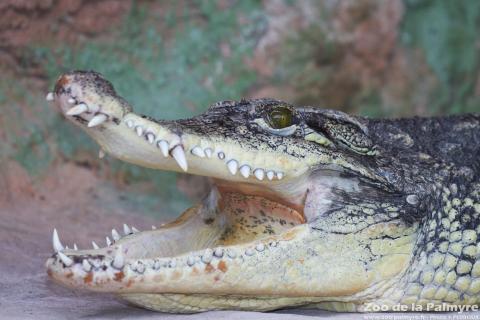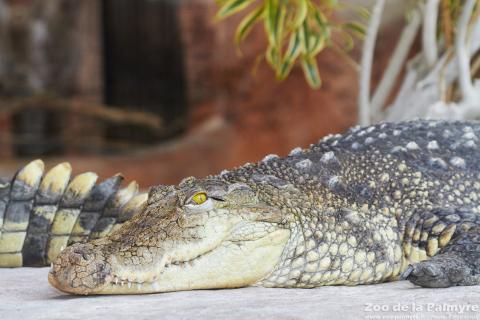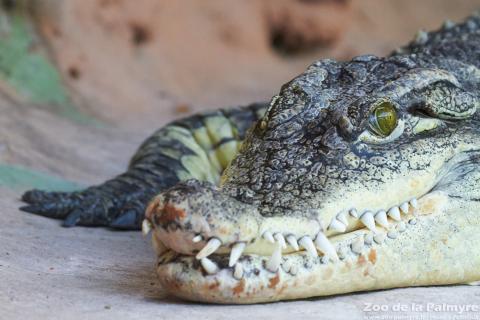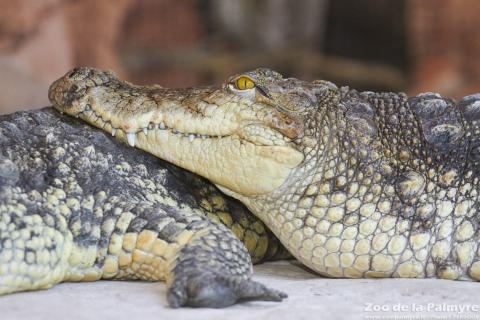Nile Crocodile

Nile Crocodile

-
Class
Reptilia -
Order
Crocodylia -
Familly
Crocodylidae
-
 more than 4m
more than 4m -
 250 to 500kg on av. (sometimes up to 1t)
250 to 500kg on av. (sometimes up to 1t) -
 84–90 days
84–90 days -
 40-60
40-60 -
 60 to 80 years
60 to 80 years
-
Diet
carnivore (fish, wildebeest, zebras, antelopes… -
Habitat
rivers, mangroves, estuaries -
Range
Central and Southern Africa, Nile basin, Madagascar -
Population in the wild
Stable -
IUCN REDLIST status

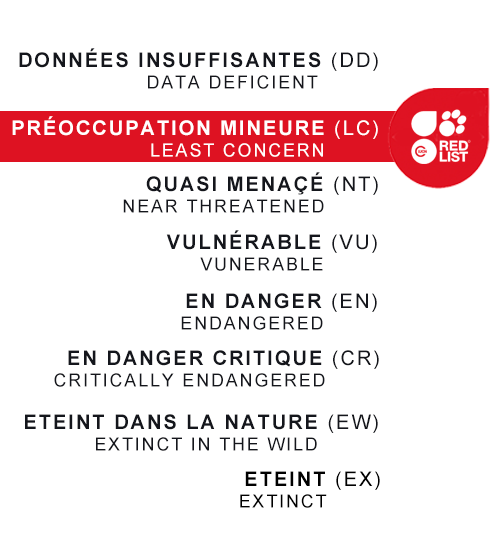
The Nile Crocodile is the most common crocodilian in Africa. It is also the second largest species after the Salt-water Crocodile (Crocodylus porosus).
During the dry season between November and December, the female lays about 60 eggs in a hole a few meters from the riverbank. She covers it with sand and guards it for a three-month incubation period until the young hatch. When about to hatch, the young make noises that encourage the mother to dig them out of the nest. Then she gathers them in her mouth and carries them to the water where she will protect her young from predators during several months, until they are able to defend themselves.
Juveniles usually feed on insects and amphibians. Gradually their diet starts to diversify to include largest preys as the individual matures.
Widely hunted from the 1940’s to the 1960’s for its skin and its meat, the Nile Crocodile population was severely depleted throughout its range. Thanks to conservation efforts and the regulation of its trade, the species is no longer threatened with extinction globally, but it still suffers from habitat destruction, pollution and hunting as some individuals might be dangerous for the communities living nearby. The Nile Crocodile skin, which gives a high-quality leather, is very popular and there are many farms that breed the species for commercial purpose.

